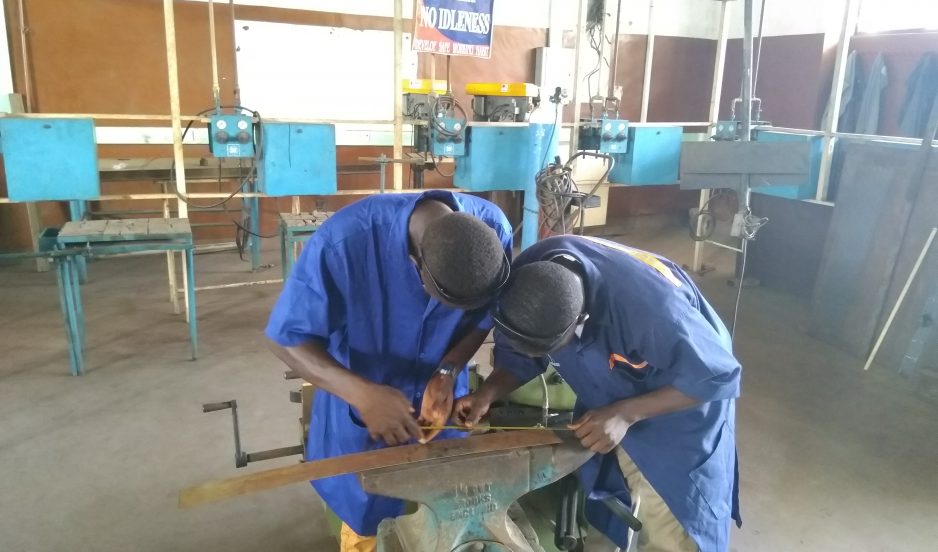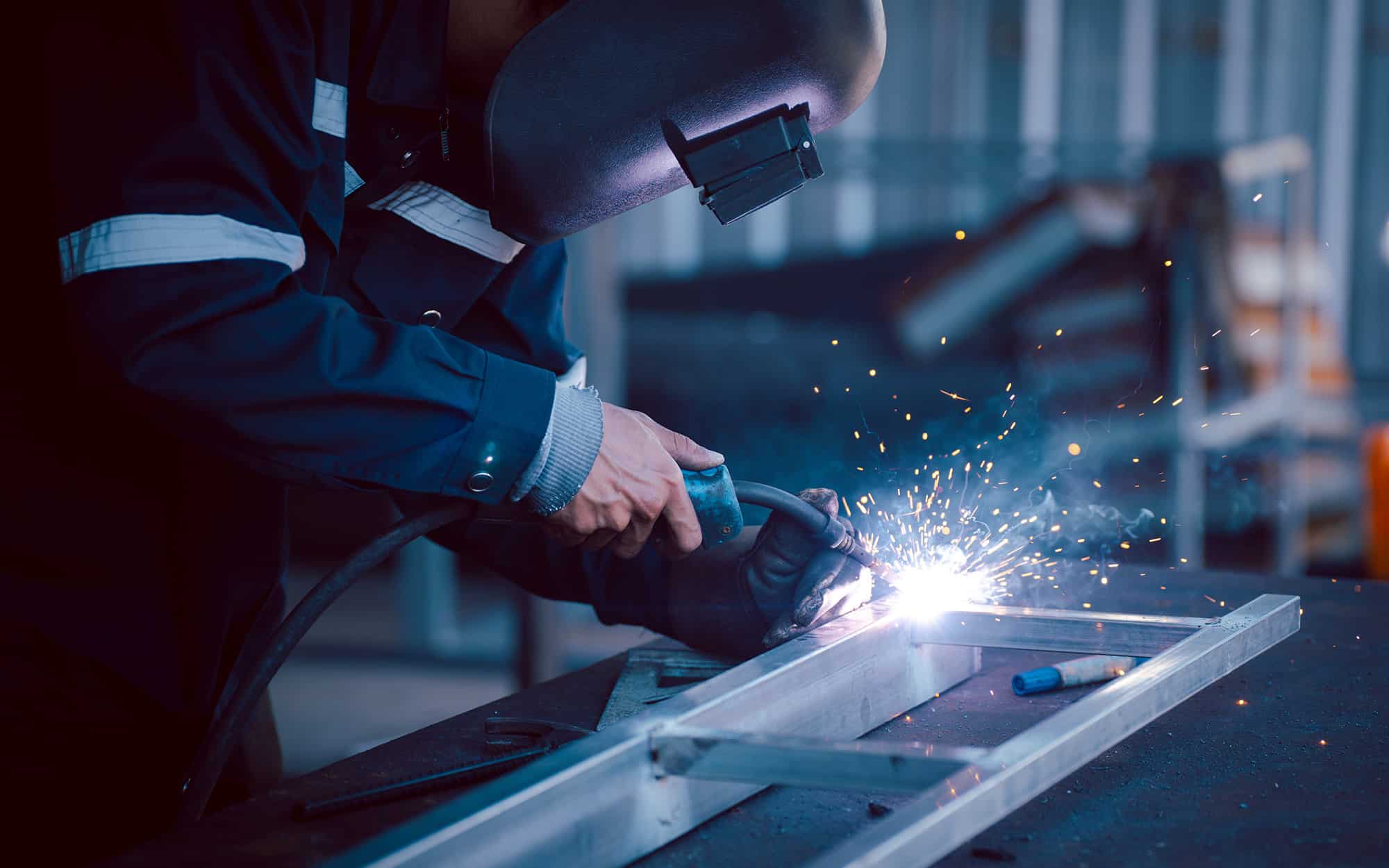All Concerning Welding: Trick Insights Into Techniques and Ideal Practices for Success
Welding incorporates a variety of methods, each matched for specific materials and applications. Comprehending these methods, such as GMAW, SMAW, and TIG, is crucial for accomplishing ideal outcomes. The best tools and safety practices can not be neglected. As prep work and fixing play essential functions in the welding process, understanding these components can greatly improve the quality of the end product. What are the key aspects that guarantee a successful weld?
Recognizing Various Welding Techniques
Welding strategies encompass a range of techniques, each suited to particular applications and products. Among the most usual methods are Gas Metal Arc Welding (GMAW), Secured Metal Arc Welding (SMAW), and Tungsten Inert Gas Welding (TIG) GMAW, also understood as MIG welding, is prominent for its rate and convenience, making it perfect for thin materials. SMAW, or stick welding, is preferred for its simplicity and efficiency in exterior environments, specifically with thicker steels. TIG welding offers precision and control, making it suitable for elaborate job and non-ferrous metals (Belgrade Welding). Each technique has its special benefits and considerations, permitting welders to choose the ideal method based upon the project's requirements, product kind, and preferred results. Comprehending these methods is vital for successful welding
Crucial Welding Devices and Tools
While different welding techniques require details abilities, the ideal devices and tools are similarly vital for achieving top quality outcomes. Essential welding equipment consists of welding machines, which differ relying on the technique-- such as MIG, TIG, or stick welding. Safety gear, consisting of headgears, aprons, and gloves, warranties safety and comfort during the process. On top of that, clamps and components help protect products in position, making sure accuracy in welds. Consumables like welding rods, cable, and securing gas are additionally crucial elements that affect the high quality of the weld. Devices such as grinders and cutters help with surface area preparation and post-weld finishing, adding to a professional end result. Investing in top quality tools inevitably boosts the performance and efficiency of welding projects.
Safety And Security Practices in Welding
Correct safety techniques are necessary in the welding sector to shield workers from potential risks. Welders need to use suitable individual protective tools (PPE), consisting of safety helmets with appropriate shading, handwear covers, and flame-resistant apparel. Appropriate air flow is important to reduce exposure to unsafe fumes and gases produced during the welding process. In addition, workers should be educated in the appropriate handling of welding equipment to stop accidents. Fire precaution, such as maintaining combustible materials far from the welding location and having fire extinguishers easily offered, are required. Normal evaluations of equipment and offices can help recognize prospective dangers prior to they bring about crashes. By sticking to these safety and security techniques, welders can produce a safer working setting and lessen threats connected with their trade.
Readying Materials for Welding
Preparing materials for welding is a crucial step that substantially influences the top quality and integrity of the end product (Montana Mobile Welding and Repair Welding). Proper preparation involves cleaning up the surface areas to get rid of impurities such as corrosion, oil, and dirt, which can endanger the weld. Techniques such as grinding, fining sand, or utilizing solvents are commonly utilized to accomplish a tidy surface area. Additionally, guaranteeing that the materials mesh well is crucial; gaps can result in weak welds. It's also important to take into consideration the placement and positioning of the elements, as this will impact the simplicity of welding and the last end result. Lastly, selecting the ideal filler product and ensuring compatibility with the base metals is necessary for achieving solid, durable welds
Tips for Achieving High-Quality Welds
Attaining high-grade welds requires interest to information and adherence to ideal methods throughout the welding process. Appropriate joint preparation is essential, ensuring surface areas are cost-free and tidy from contaminants. Selecting the proper filler material and welding technique based on the base metals is essential for ideal bonding. Preserving constant travel speed and angle while welding can promote and prevent problems uniformity. Furthermore, regulating heat input is necessary; excessive warm can lead to bending and damaged joints. Frequently checking the welds throughout the procedure enables for instant changes if necessary. Lastly, using suitable post-weld therapies, such as cleaning and anxiety alleviation, can boost the toughness and integrity of the weld, eventually ensuring an effective result.
Troubleshooting Common Welding Issues
Welding frequently provides difficulties that can affect the high quality and honesty of the final item. Usual problems such as porosity, inconsistent weld beads, and getting too hot can emerge, each needing particular fixing techniques. Understanding these problems is vital for welders to boost their abilities and attain optimal outcomes.
Porosity Issues Discussed
Porosity can usually be neglected, it continues to be an essential problem in welding that can compromise the stability of an ended up item. Porosity describes the presence of tiny gas pockets within the weld bead, which can lead and weaken the joint to early failure. This problem go to these guys normally emerges from pollutants, dampness, or click for info inappropriate shielding gas protection during the welding procedure. To reduce porosity, welders should confirm that the base products are completely dry and clean, utilize suitable protecting gases, and maintain consistent welding specifications. On a regular basis inspecting the equipment and atmosphere can likewise help recognize possible problems before they materialize in the weld. Addressing porosity effectively is crucial for attaining solid, long lasting welds that satisfy high quality requirements.

Inconsistent Weld Beans
Irregular weld beads can greatly influence the high quality and toughness of a completed product. Different factors add to this concern, consisting of incorrect travel speed, wrong amperage setups, and irregular electrode angles. When the welder moves too quickly, a bead might appear slim and lack infiltration, while relocating also gradually can cause extreme buildup. Additionally, using the wrong amperage can cause either undercutting or too much spatter, both of which compromise weld honesty. The welder's method, such as inconsistent lantern movement, can also lead to unequal bead appearance. To alleviate these problems, welders must concentrate on keeping steady, regulated movements and guaranteeing appropriate devices setups to accomplish uniformity in their welds. Uniformity is vital to attaining strong and trusted welds.
Getting Too Hot and Bending Issues
Excessive warmth during the welding process can cause substantial getting too hot and buckling problems, influencing the structural honesty of the workpiece. These problems usually materialize as distortion, which can compromise alignment and fit-up, making more assembly testing. Aspects adding to overheating include the choice of welding criteria, such as voltage and take a trip speed, in addition to the sort of product being welded. To mitigate these issues, welders ought to keep regular traveling speed and proper warmth input while keeping an eye on the workpiece temperature level. In addition, pre-heating or post-weld warmth therapy can assist ease tensions triggered by rapid air conditioning - Belgrade Fabrication. Routine examination and adherence to best techniques are crucial in preventing overheating and guaranteeing company website the long life and integrity of bonded frameworks
Regularly Asked Inquiries
What Are the Job Opportunities in the Welding Market?
The welding sector offers diverse job opportunities, including placements as welders, instructors, assessors, and designers. Experts can operate in manufacturing, building, aerospace, and automotive sectors, gaining from solid need and competitive incomes in numerous roles.
Exactly How Can I Enhance My Welding Rate Without Sacrificing Top Quality?
To enhance welding speed without sacrificing quality, one ought to exercise efficient methods, preserve tools, maximize setups, and boost hand-eye coordination. Normal training and seeking comments can additionally considerably add to attaining quicker, high-quality welds.
What Accreditations Are Readily Available for Welders?
Many certifications exist for welders, consisting of those from the American Welding Society (AWS), the National Facility for Building Education and Research Study (NCCER), and various industry-specific organizations. These qualifications boost employability and show skill proficiency.
Just How Does Welding Influence the Characteristics of Metals?
Welding influences the properties of steels by altering their microstructure, which can cause changes in strength, ductility, and hardness. Warm input and cooling rates during the procedure substantially impact these product features.
Can I Weld Dissimilar Metals Together?
